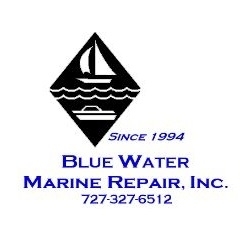
Blue Water Marine Repair
(on 17th ave)Auto Repair in Gulfport, FL

We are a Rapid Response™ dealer for Volvo Penta, which means we can be reached after hours as well. Rapid Response is for emergencies, and available for customers under warranty only.
Having your boat serviced by an authorized Volvo Penta dealer gives you peace of mind knowing it is not just a service, but a complete checkup. On EDC/EVC diesel engines and EGC/EVC gas catalyst engines, we hook up our diagnostic computer to make sure everything is operating properly. We do everything in our power to keep your boating experience trouble free.
Since 1994, we not only do service on both diesel and gas Volvo Penta engines, but we also handle all of the warranty issues along with the 2 + 4 Volvo Penta extended warranty repairs and claims.
